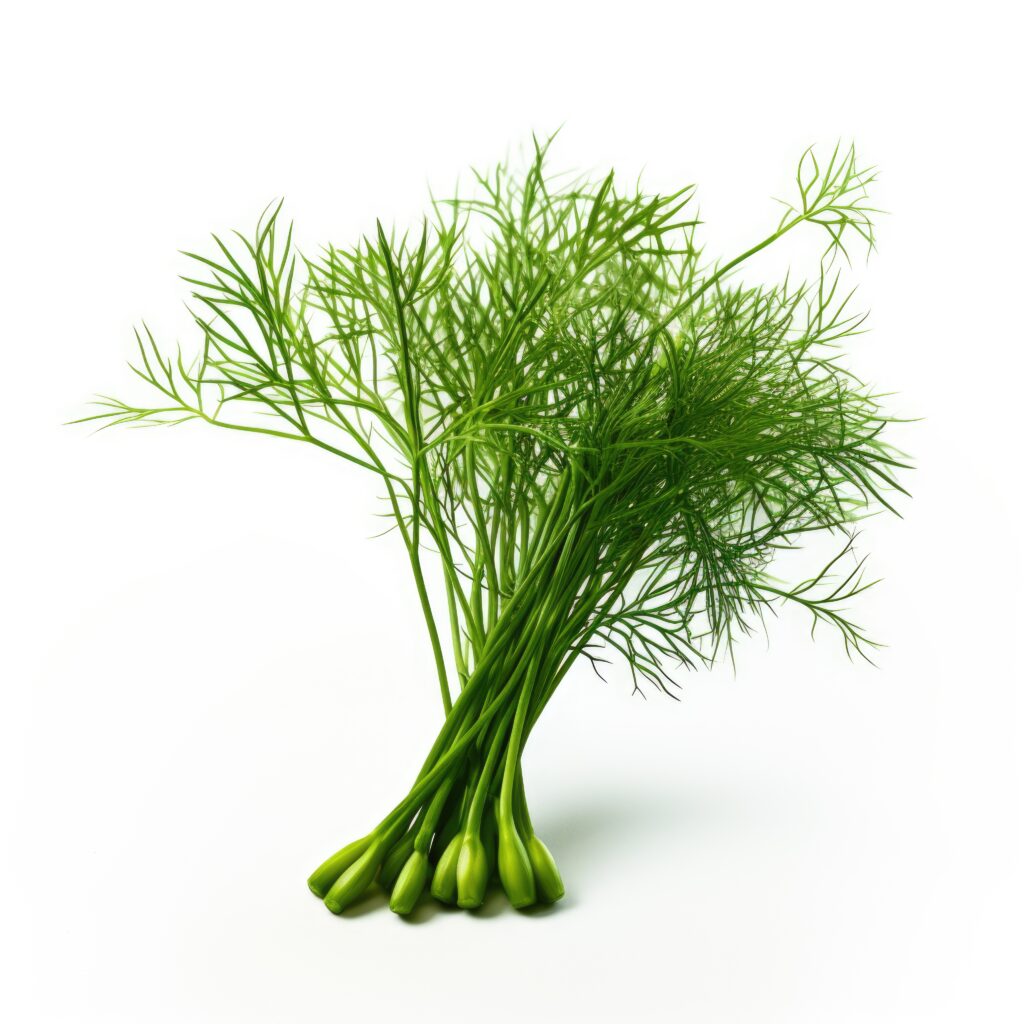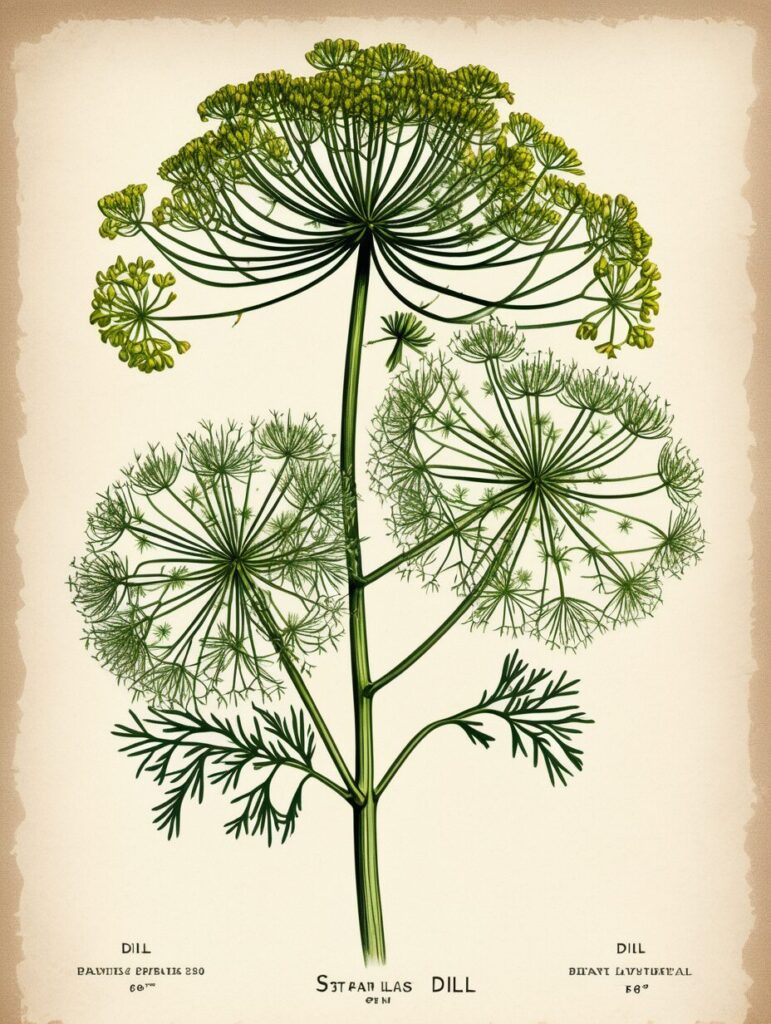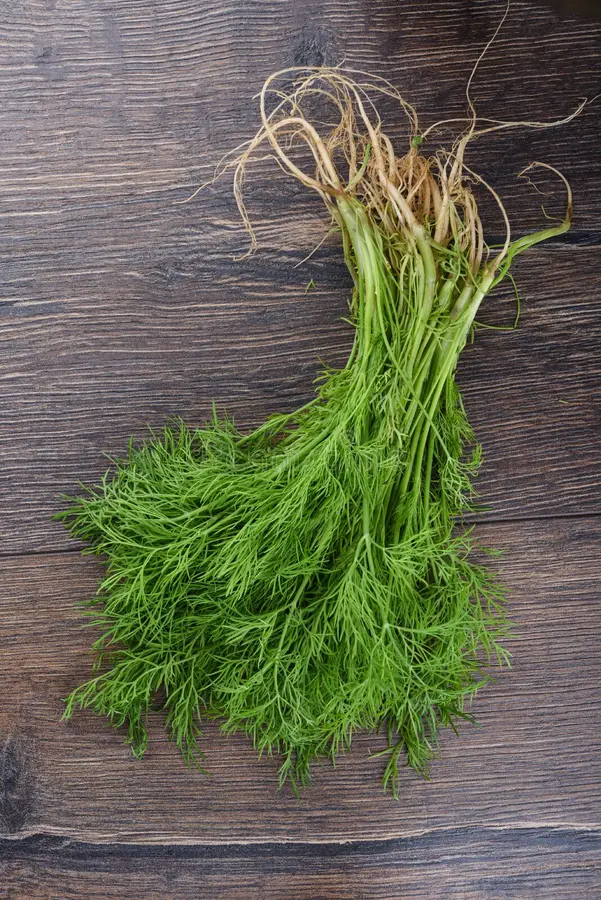Dill, with its delicate fronds and vibrant energy, has always occupied a unique space in both kitchens and herbal medicine cabinets. Its allure lies not only in its aromatic charm but also in the rich tapestry of benefits it offers to our well-being. As I embarked on my exploration of dill, I discovered layers of complexity beneath its feathery exterior—a herb that not only dazzles the palate but also nurtures the body and soul.



Unlike fennel, which often gets mistaken for its similar appearance and aromatic profile, dill occupies its own niche with a distinctive flavor that is both sweet and slightly tangy. The relationship between dill and fennel highlights the intricate diversity found within nature, where subtle differences create an expansive variety in taste and therapeutic potential. This journey with dill was one of uncovering the powerful medicinal qualities hidden in its tender leaves and seeds, a path that deepened my appreciation for nature’s hidden potential.
Dill is a cool-season annual, which means it completes its life cycle in a single growing season. It thrives in full sun to partial shade and well-drained soil, making it a welcome addition to any herb garden. With its bright green leaves and delicate yellow flowers, dill paints a striking picture against the backdrop of a garden or a dinner plate. Its feathery texture and bold aroma entice both the eyes and the nose, offering an unmistakable signature to the dishes it graces. In my garden in Ecuador, I let Dill reseed herself whereever she may like. She is quite abundant all year round.

Dill roots, while often overlooked compared to the feathery foliage and seeds, hold their own unique medicinal properties that contribute to the herb’s overall therapeutic profile. Traditionally used in herbal remedies, dill roots are believed to possess potent diuretic and detoxifying qualities, which aid in flushing out toxins and promoting healthy urinary function. They have been employed in folk medicine to alleviate fluid retention and to support kidney health, offering a gentle cleanse to the body’s filtration systems. Additionally, the roots contain compounds that can soothe digestive disturbances, further enhancing dill’s reputation as a comprehensive digestive aid. By exploring the roots, one uncovers an additional layer of dill’s capacity to promote wellness and harmonize bodily functions, providing yet another facet to this versatile herb’s medicinal legacy.
Culinary prowess aside, dill’s contributions to health and wellness are profound. Known for its digestive properties, dill has been used for centuries to support healthy digestion and alleviate discomfort. The essential oils within dill, particularly carvone, play a key role in calming the digestive tract. Their antispasmodic properties aid in alleviating bloating, gas, and indigestion, making dill a gentle yet effective ally for a settled stomach.
In the world of nutrition, dill stands out as a remarkable source of vitamin C—a potent antioxidant that bolsters the immune system. This essential vitamin is known for its role in protecting against infections and illness, enhancing the body’s natural defenses. The presence of calcium and manganese in dill fortifies its nutritional profile, offering benefits that range from supporting bone health to aiding metabolism. Behind its understated appearance, dill emerges as a silent supporter of strength and well-being.
Traditionally, dill has been cherished as a remedy for colic in infants. The age-old practice of using dill water to soothe infants speaks to its gentle nature and its calming effect on the nervous system. This soothing quality is attributed to carvone’s ability to relax muscles and calm the mind, providing comfort and tranquility to both infants and adults alike.
Beyond its digestive benefits, dill wields antimicrobial properties. The essential oils within its leaves and seeds combat harmful bacteria, fostering a harmonious microbial balance within the gut. As a defender of wellness, dill not only pleases the palate but also supports the complex ecosystem of the body, contributing to our holistic well-being.
With its fresh, slightly tangy taste, dill enhances the flavors of numerous dishes. It lends brightness to salads, soups, and seafood, acting as a culinary chameleon that elevates any meal it touches. Dill’s vibrant green color and aromatic presence make it a feast for the senses, whether used fresh or dried.
The symbiotic relationship between dill and Lactobacillus plantarum, a beneficial bacterium, illustrates the harmony within nature. Lactobacillus plantarum forms a symbiotic dance with dill’s root zone, enhancing nutrient availability and promoting overall plant health. This microbial partnership contributes to flavor development and enhances the herb’s digestive benefits—a testament to the interconnected tapestry of life.
Beyond the kitchen, dill enjoys a rich history within herbal medicine. Its uses span centuries, addressing ailments from digestion to sleep disorders. Dill’s calming effects on the digestive system, ability to manage hiccups, and even moderate cough highlight its broad spectrum of healing properties. As a mild sedative, its soothing qualities extend to the nervous system, promoting relaxation in times of stress.
From an Ayurvedic perspective, dill is cooling and soothing, offering balance to Pitta and Vata doshas. Its sweet, aromatic taste pacifies Vata, addressing coldness, dryness, and erratic energy, while simultaneously calming Pitta by reducing excess heat and inflammation. This multi-faceted ability makes dill a balanced choice for fostering inner harmony.
Planting dill offers the gardener a unique opportunity to cultivate a vibrant herb that invites beneficial insects to the garden. Dill’s ability to attract parasitic wasps, natural enemies of pests, underscores its value as a companion plant in organic gardening practices. With an inviting aroma reminiscent of anise, dill lures pollinators and beneficial insects to its delicate blooms, creating a harmonious garden ecosystem.
Creamy Dill and Cucumber Salad with Lemon Dressing
Incorporate the refreshing, uplifting flavor of dill into your next meal with this Creamy Dill and Cucumber Salad. This dish combines the cool crispness of cucumbers with the aromatic essence of dill, creating a balanced and delightful salad perfect for any occasion.
Ingredients:
- 2 large cucumbers, thinly sliced
- 1/4 cup of fresh dill leaves, chopped
- 1/4 cup of raw cashews, soaked for 2 hours and drained
- 1/4 cup of unsweetened coconut yogurt
- 1 tablespoon of freshly squeezed lemon juice
- 1 tablespoon of extra-virgin olive oil
- 1 clove of garlic, minced
- Salt and pepper to taste
Instructions:
- Combine Ingredients: In a large mixing bowl, combine the thinly sliced cucumbers with the chopped dill leaves.
- Prepare Dressing: In a blender or food processor, blend the soaked cashews, coconut yogurt, lemon juice, extra-virgin olive oil, minced garlic, salt, and pepper until smooth and creamy.
- Mix Salad: Pour the creamy dressing over the cucumbers and dill in the mixing bowl. Toss gently until cucumbers and dill are well-coated with the dressing.
- Marinate: Allow the salad to rest in the refrigerator for at least 15-20 minutes to let the flavors meld together.
- Serve: Serve the Creamy Dill and Cucumber Salad chilled, and savor the refreshing and vibrant combination of flavors.
Dill, far more than a mere culinary herb, stands as a tribute to nature’s complexity and capacity for healing. Its aromatic presence and gentle power remind us to slow down, appreciate simple pleasures, and harness the nurturing gifts that earth provides. Through its fronds, dill offers lessons of resilience and joy, lifting the spirit and nourishing the body.



